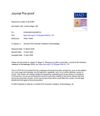Cutaneous Immunopathology of Androgenetic Alopecia
August 1991
in “
The Journal of the American Osteopathic Association
”
TLDR Inflammation may play a role in causing androgenetic alopecia.
The study from 1991 examined the role of inflammation in androgenetic alopecia (AGA) by analyzing scalp biopsy specimens from 26 patients with AGA and comparing them to controls. It found that 96% of the AGA patients had granular deposits of Immunoglobulin M or C3 at the basement membrane, compared to 12% of controls, and 31% had C3 deposits on eccrine myoepithelial cells, while none of the controls did. Porphyrins were present in the pilosebaceous canal of 58% of AGA patients versus 12% of controls. These findings suggested that inflammation, potentially exacerbated by factors like Propionibacterium acnes and light exposure, might contribute to the development of AGA, alongside hormonal and genetic factors.





